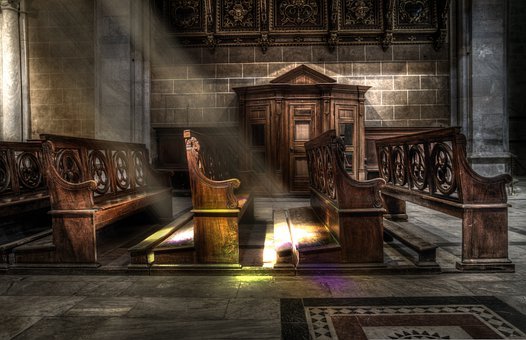For the 400th anniversary of the founding of the Congregation of Propaganda Fide (1622), the Vatican agency Fides publishes a text that retraces the history of “the polyglot printing press of Propaganda Fide”, one of the first “operational instruments” which had enabled the congregation to announce Good News to the world.
The decision to create the Congregation’s Printing Office was taken on June 3, 1626, and already in 1627, Pope Urban VIII appointed Cardinal Guido Bentivoglio (1577-1644) as head of the printing office and the prefecture of the press. . According to the chronicles, the Printing House had its first premises in the Salita del Grillo, between the Quirinal Hill and the Imperial Forums, in Rome. In 1643, typography was transferred to premises near the headquarters of the Urban College, in Piazza di Spagna.
Works at the service of missionaries
The first printed volume is probably a Greek version of the Guia de pecadores (Guide to Sinners) by the Spanish Dominican Louis de Granada (1504-1588), followed by works on grammar, law and spirituality, all intended to serve missionaries in the East.
The printing house begins to work thanks to the characters (types) that Emperor Ferdinand II gave to Propaganda Fide: these are the “Illyrian characters of Saint Jerome and Saint Cyril”, that is to say the Glagolitic Western (the oldest Slavic alphabet) and Cyrillic. With these characters, which arrived from Austria, and with the Greek and Latin characters found in Rome, Giovanni Bandini and Francesco Paolini, correctors of the Stamperia Camerale, begin to work.
Among the many important works published by the Printing House is the first complete edition of the Bible in Arabic, published in 1671.
The second catalog of the Imprimerie, published in 1667, presents works in the service of missionaries, such as those of the Maronite Abraham Ecchellensis (1600-1664), scholar, scholar and connoisseur of Oriental languages; of Leo Allatius (1586 -1669), Italian writer of Greek origin who was guard of the Vatican library; of Cardinal Giovanni Bona (1609-1674), Discalced Carmelite missionaries.
Particular attention is paid to translation work, at a time when significant efforts are being made to counter the teachings disseminated by Protestant and Orthodox texts.
Important personalities
The two personalities were most involved in the founding of the Polyglot Printing House: the first was Cardinal Guido Bentivoglio, the second was Msgr. Francesco Ingoli (1578-1649), a man of culture, first secretary of the Propaganda Fide congregation.
Cardinal Guido Bentivoglio
Card. Bentivoglio is from Ferrara, where he was born on October 4, 1577. He studied at the University of Padua, showing a particular predilection for history and composing, in the following years, works that represent, according to specialists, an essential step in the development of modern historical methodology.
Thanks to his friendship with Cardinal Pietro Aldobrandini, nephew of Pope Clement VIII, Card. Bentivoglio was appointed secret chamberlain to the pope and, after completing his studies in Padua, moved to Rome.
Appointed cardinal by Pope Paul V on January 11, 1621, he was apostolic nuncio in Flanders, then at the Court of France. Then he returns to Rome and is in charge of the Inquisition.
This cardinal, with a refined culture and, at the same time, a capacity for synthesis and dissemination, was appointed in 1627 to head the brand new polyglot printing press of Propaganda Fide.
He left several books, some of which have been translated into other languages, for which he is recognized for his skill and his passion for diplomacy and politics.
He died in Rome on September 7, 1644.
Archbishop Francesco Ingoli
Another personality who played an important role in the birth of polyglot printing was Monsignor Francesco Ingoli, first secretary – from 1622 to his death in 1649 – of the congregation of Propaganda Fide.
Bishop Ingoli is the author of the “Report of the four parts of the world” (1630): a geo-missionary work written on the basis of the reports of missionaries in each part of the world known at the time.
The manuscript, thought to be lost and only rediscovered in 1999, consists of five letters addressed to Father Valeriano Magni, then Provincial of the Capuchins in Bohemia. Each letter provides a complete picture of the missionary activity of the Catholic Church in the mid-seventeenth century. “Europe”, “Asia”, “Africa” and “America” are the four parts of the world to which Bishop Ingoli devotes his work. A fifth letter speaks of “things done in Rome for the propagation of the faith”, describing the first years of the life of the Congregation.
Archbishop Ingoli is firmly convinced that the newly founded dicastery must include, among its main tasks, the printing of books in the different languages for missionary work: above all, these are texts of Sacred Scripture and Catholic Doctrine. in the language of the peoples to whom the missionaries are sent.
Very quickly, the published texts are not only reserved for missionaries, but are distributed in European bookstores: for religious reasons, but also economic, in order to support the enormous expenses.
During the French Revolution, “the polyglot printing press of Propaganda Fide” suffered looting, but managed to recover and continue its missionary work throughout the 19th century. In 1909, the Propaganda Fide printing house was incorporated into the current Tipografia Poliglotta Vaticana.
“The Polyglot Printing House of Propaganda Fide”: History and Personalities – ZENIT – English

